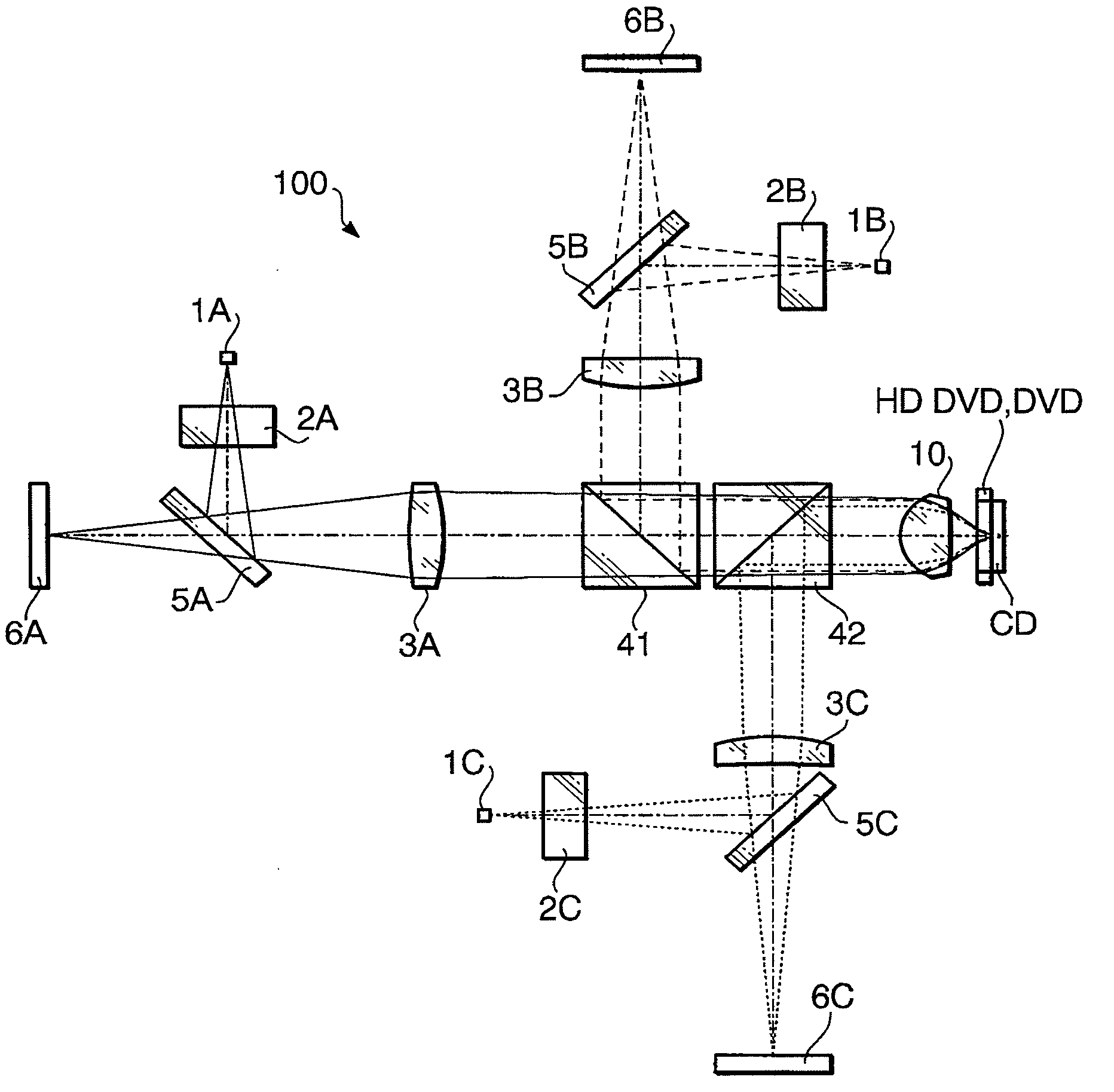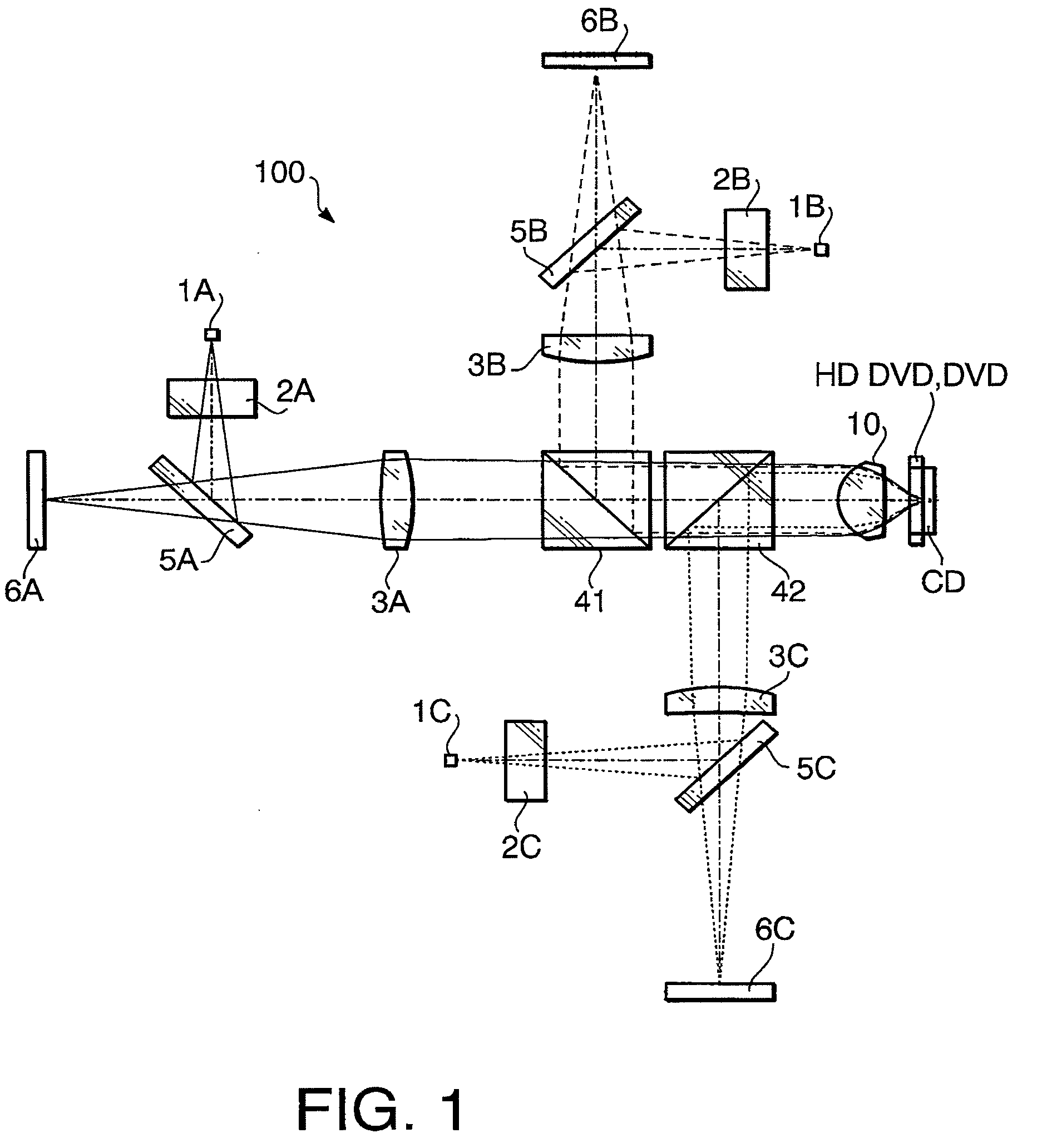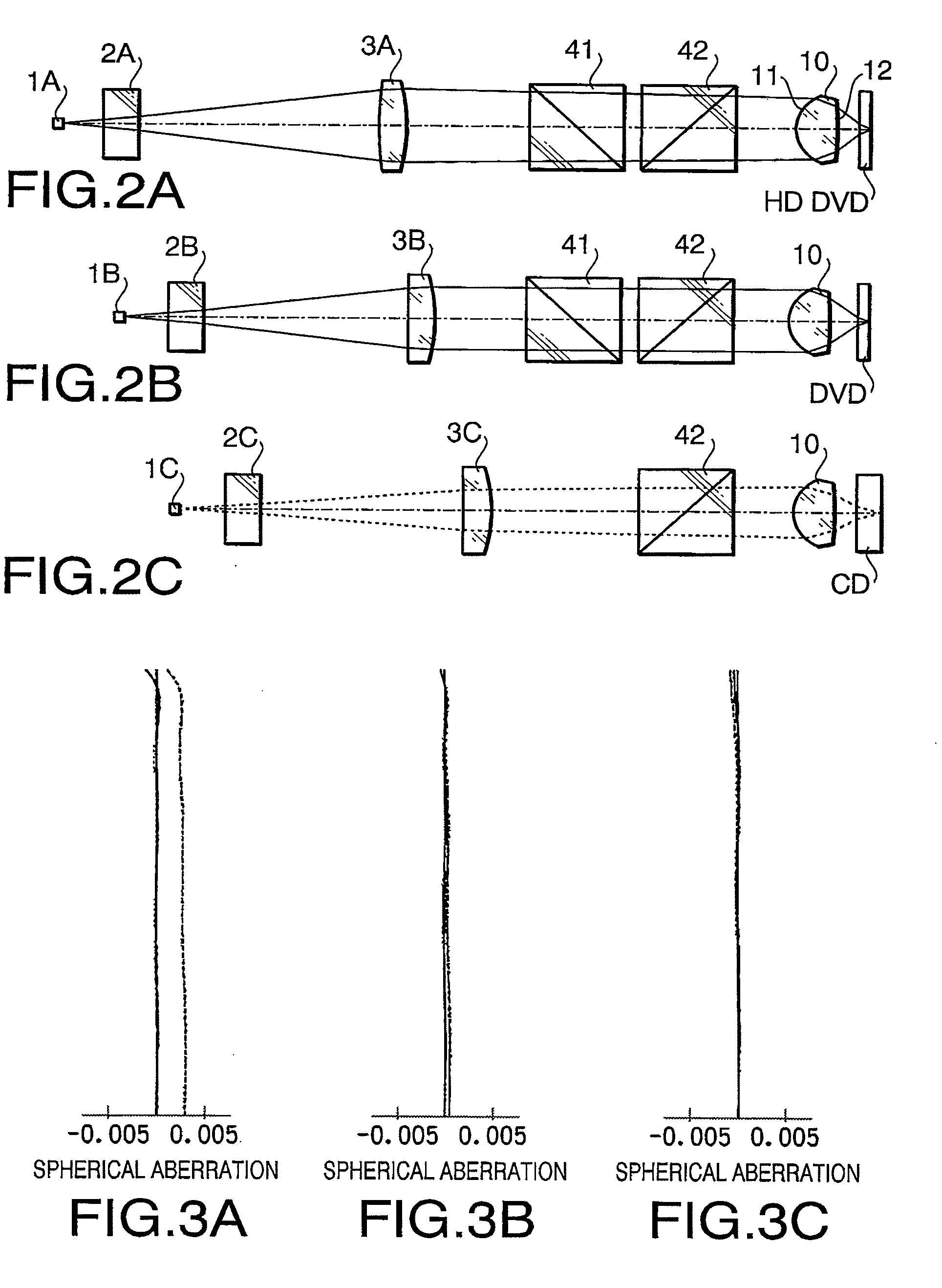Optical pick-up
a pickup and optical technology, applied in the field of optical pickups, can solve the problems of not being able to achieve information recording or information reproducing, and achieve the effects of increasing the cost of coupling lenses, and increasing the number of components
- Summary
- Abstract
- Description
- Claims
- Application Information
AI Technical Summary
Benefits of technology
Problems solved by technology
Method used
Image
Examples
first embodiment
[0052]Hereafter, an optical pick-up according to a first embodiment is explained. The optical pick-up is used for recording information to and / or reproducing information from a plurality of types of optical discs including a first optical disc (e.g., HD DVD) having the highest recording density and having the protective layer thickness of 0.6 mm, a second optical disc (e.g., DVD) having the second highest recording density and having the protective layer thickness of 0.6 mm and a third optical disc (e.g., CD) having the lowest recording density and having the protective layer thickness of 1.2 mm.
[0053]In the following, the term “compatibility” means that the optical pick-up ensures the information reproducing and / or information recording with no need of component replacement even when the optical disc being used is switched.
[0054]FIG. 1 is an exemplary example of a block diagram of an optical system in an optical pick-up 100 according to the first embodiment. FIG. 2A illustrates a d...
second embodiment
[0093]Hereafter, an optical pick-up according to a second embodiment is explained. Since the optical pick-up according to the second embodiment has substantially the same optical block diagram as that of the first embodiment, the following explanation of the second embodiment focuses on the feature of the second embodiment.
[0094]The following Table 12 shows concrete specifications of a second embodiment of the optical pick-up 100. The optical block diagram of the optical pick-up 100 according to the second embodiment is shown in FIG. 1. The developed optical block diagram defined when the first optical disc is used is shown in FIG. 5A. The developed optical block diagram defined when the second optical disc is used is shown in FIG. 5B. The developed optical block diagram defined when the third optical disc is used is shown in FIG. 5C.
TABLE 121st laser2nd laser3rd laserbeambeambeamWavelength (nm)405660790Focal Length (mm)3.003.123.12NA0.650.600.47Magnification M0.0300.000−0.041
[0095]...
third embodiment
[0108]Hereafter, an optical pick-up according to a third embodiment is explained. Since the optical pick-up according to the third embodiment has substantially the same optical block diagram as that of the first embodiment, the following explanation of the third embodiment focuses on the feature of the third embodiment.
[0109]The following Table 22 shows concrete specifications of a third embodiment of the optical pick-up 100. The optical block diagram of the optical pick-up 100 according to the third embodiment is shown in FIG. 1. The developed optical block diagram defined when the first optical disc is used is shown in FIG. 8A. The developed optical block diagram defined when the second optical disc is used is shown in FIG. 8B. The developed optical block diagram defined when the third optical disc is used is shown in FIG. 8C.
TABLE 221st laser2nd laser3rd laserBeamBeamBeamWavelength (nm)405660790Focal Length (mm)2.302.372.39NA0.660.600.47Magnification M0.0350.000−0.050
[0110]Table ...
PUM
| Property | Measurement | Unit |
|---|---|---|
| thickness t3 | aaaaa | aaaaa |
| thickness t3 | aaaaa | aaaaa |
| wavelength | aaaaa | aaaaa |
Abstract
Description
Claims
Application Information
 Login to View More
Login to View More - R&D
- Intellectual Property
- Life Sciences
- Materials
- Tech Scout
- Unparalleled Data Quality
- Higher Quality Content
- 60% Fewer Hallucinations
Browse by: Latest US Patents, China's latest patents, Technical Efficacy Thesaurus, Application Domain, Technology Topic, Popular Technical Reports.
© 2025 PatSnap. All rights reserved.Legal|Privacy policy|Modern Slavery Act Transparency Statement|Sitemap|About US| Contact US: help@patsnap.com



